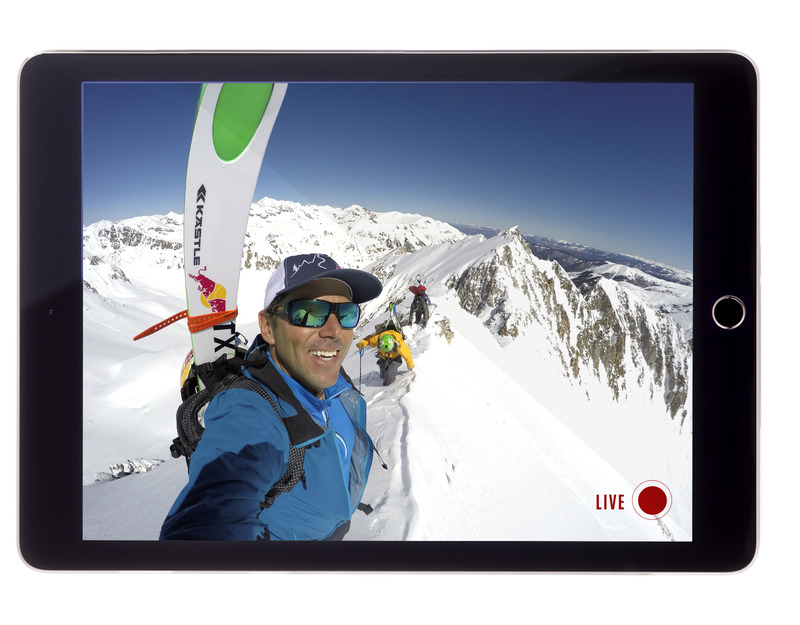The Local newsletter is your free, daily guide to life in Colorado. For locals, by locals.
Last May, alpinist and professional photographer Cory Richards, who was a resident of Boulder at the time, shared his ascent of Mt. Everest live via Snapchat. His stream, titled #EverestNoFilter, introduced hundreds of thousands of viewers to vertiginous peaks and stunning vistas—as well as some of the climb’s more unsavory aspects (e.g., packing out poop). It marked the first time anyone has provided a live, unedited look at what it’s like to climb the world’s tallest mountain on what’s become one of the fastest-growing social media platforms.
Richards’ broadcast is just one example of how Colorado athletes are flocking to real-time feeds as a new outlet to reach their fans. Aspen resident and big-mountain skier Chris Davenport jump-started the trend in November 2015 when he became the first person to use Facebook Live from Antarctica. Snapchat, Facebook, and Instagram all have invested significant dollars in live-streaming capabilities since then, making it easier than ever for followers to watch your moves as they happen. (Snap Inc.’s version of Google Glass, called Spectacles, launched in November.) “It’s kind of like how reality television took off in the ’90s,” Davenport says. “Only this is reality internet.”
When it comes to extreme adventuring, though, nothing is easy. In contrast to static social media posts, live video streams require Wi-Fi or a 4G connection on your mobile phone. In remote areas of the world, that means tapping into the Broadband Global Area Network (BGAN), a satellite network that provides internet coverage nearly everywhere on Earth. Users connect to one of BGAN’s three geostationary satellites through a portable, laptop-size terminal, which creates a Wi-Fi hot spot.
123: The number of professional athletes who have signed with Like a Pro, a Denver website that alllows sports stars to share training tips directly with with fans
Of course, this type of access comes at a price. Davenport’s handful of posts in Antarctica cost thousands of dollars, and Richards’ sessions on Everest totaled $23,000—all paid by the athletes’ sponsors, who tend to see the feeds as a valuable tool to promote their brands. (See the Kästle logo in the photo above.) So while it may seem like athletes are reaching fans directly through live streams, sponsors are certainly involved, although the real-time nature of the feeds makes it impossible for sponsors to edit them.
Not all expeditions lend themselves to live streams. A BGAN terminal weighs eight pounds, making it impractical to add to certain climbs. (On Everest, porters help carry your load.) Other times, stopping to live-stream might actually be an impediment to your adventure, like when you’re, say, trying to clock the fastest known time (FKT) for the Longs Peak Triathlon—biking from Boulder to Longs Peak, running the approach, climbing the Diamond, running down, and biking back—like Boulder superstar Anton Krupicka. His sponsor, La Sportiva North America, also based in Boulder, was happy to pay the higher cost for a video crew instead.
For many adventure athletes, the ability to let passionate fans feel like they’re part of the action makes up for such downsides. That’s the belief of Ridgway mountaineer Chad Jukes, who became the second combat-wounded veteran to summit Everest in May and plans to document his attempt on the Moose’s Tooth peak in Alaska this month. In his words: “You can’t beat the excitement of a live stream from a truly remote and wild place.”









